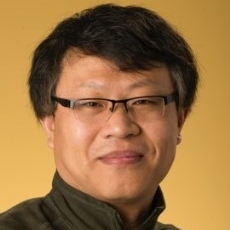Nonlinear and Quantum Optics in Coupled Structures: Fundamentals and Applications
A special issue of Photonics (ISSN 2304-6732). This special issue belongs to the section "Quantum Photonics and Technologies".
Deadline for manuscript submissions: closed (10 August 2022) | Viewed by 17923
Special Issue Editors
Interests: quantum optics; nonlinear dynamics; quantum many-body physics; quantum measurement and sensing
Special Issue Information
Dear Colleagues,
With recent advances in technology, it has been possible to fabricate microresonators and waveguides with ultra-high quality factor Q, in which myriads of effects due to the confined light field can be approached and realized. One example is the enhancement of optical nonlinearity. High Q factor increases the interaction time for the light inside a micro-cavity, and its reduced volume to a very small scale significantly augments the field intensity. The combination of these two factors can create a strong nonlinearity out of the light–matter interaction inside a micro-cavity.
The light confined to a small space also acts through various different interfaces, such as superconductors, mechanical resonators, and others, which are found to be applications in optical signal processing, quantum computing, and supersensitive sensing. Especially, more novelties display in coupled microrenators or waveguides with large nonlinearity, thus making them a testbed for probing quantum many-body systems in condensed matter physics. Meanwhile, various hybrid light–matter systems involving coupled micro-structures have been proposed for both interests in fundamental research and practical applications. These topics reveal important research areas for the future.
This Special Issue of Photonics, entitled “Nonlinear and Quantum Optics in Coupled Structures: Fundamentals and Applications”, will focus on new developments of research on classical and quantum optical effects in micro-structures. This multi-disciplinary endeavor encompasses both fundamentals and applied sciences. We expect to cover the topics such as circuit QED, nonlinear optics in micro-cavity, quantum optomechanics, quantum simulation with coupled microresonators and waveguides, the experimental fabrication of devices, as well as quantum measurement and other studies based on light–matter interaction in a cavity setting.
Dr. Bing He
Dr. Jianming Wen
Guest Editors
Manuscript Submission Information
Manuscripts should be submitted online at www.mdpi.com by registering and logging in to this website. Once you are registered, click here to go to the submission form. Manuscripts can be submitted until the deadline. All submissions that pass pre-check are peer-reviewed. Accepted papers will be published continuously in the journal (as soon as accepted) and will be listed together on the special issue website. Research articles, review articles as well as short communications are invited. For planned papers, a title and short abstract (about 100 words) can be sent to the Editorial Office for announcement on this website.
Submitted manuscripts should not have been published previously, nor be under consideration for publication elsewhere (except conference proceedings papers). All manuscripts are thoroughly refereed through a single-blind peer-review process. A guide for authors and other relevant information for submission of manuscripts is available on the Instructions for Authors page. Photonics is an international peer-reviewed open access monthly journal published by MDPI.
Please visit the Instructions for Authors page before submitting a manuscript. The Article Processing Charge (APC) for publication in this open access journal is 2400 CHF (Swiss Francs). Submitted papers should be well formatted and use good English. Authors may use MDPI's English editing service prior to publication or during author revisions.
Keywords
- circuit quantum electrodynamics
- micro-cavity quantum optics
- optical hybrid system
- photonic device fabrication
- quantum optomechanics
- quantum sensing
- quantum simulation
- strong optical nonlinearity






